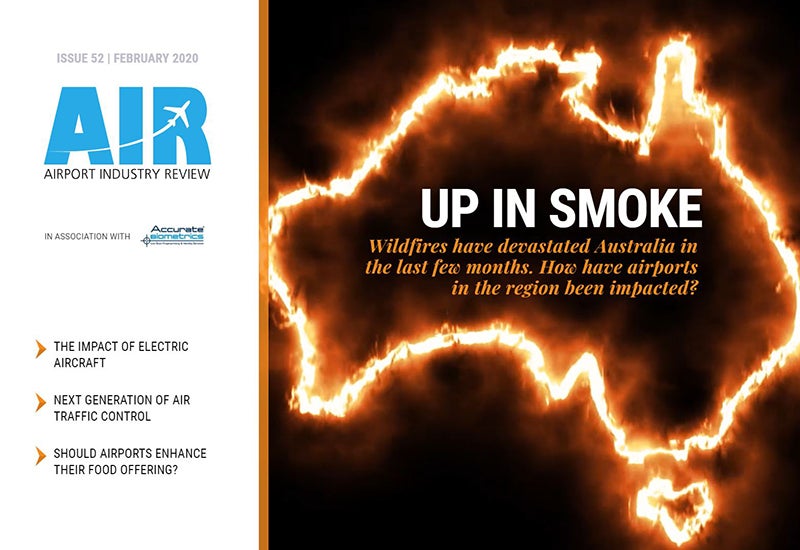
Airport Industry Review is back for another issue packed with technology news and industry analysis. In this issue, we find out how the Australia bushfires have affected airports, discuss whether electric aircraft could present a niche opportunity for smaller aviation hubs, and ask aviation experts how the industry can attract the next generation of air traffic control operators.
Whether you are on a desktop, tablet or smartphone, you can read the magazine for free online.
In this issue
Could smaller airports benefit from electric aviation?
Recent developments in electric aircraft have lent fresh hope that the aviation industry can cut its carbon footprint. Smaller airports could facilitate the accommodation of battery-powered, short-haul flights in the future, but they might have a wait on their hands. Ross Davies reports.
Roundtable: how should air traffic control attract new talent?
A global shortage of air traffic controllers is being exacerbated by huge demand for flights, so how can new talent be attracted to an industry infamous for high stress levels but rich with rewards? In this roundtable, experts from across the industry give Varsha Saraogi their take on how air traffic controllers can persuade more young people to consider ATC as a career option.
Read our special roundtable article here.
Innovative infrastructure: how technology is changing airport construction
From component tracking systems to building information modelling, airports are increasingly turning to new technologies to facilitate the construction of major projects. Ross Davies takes a look at five recent case studies.
Australia’s bushfires and the effect on airport visibility
Fires have ravaged significant portions of Australia in late 2019 and early 2020, and while disruption to flights has been relatively small, the stark situation is a reminder of how critical technology can be. Alex Love takes a closer look at the impact of this devastating event on airports in the country.
Aviation projects taking off at airports in Australia
Australia is in the middle of an infrastructure boom, with a slew of multimillion-dollar aviation projects underway to bolster connectivity with the rest of the world. Varsha Saraogi maps the biggest aviation projects on the island continent.
Take a look at our interactive map feature here.
Good drones: the UAVs changing airport operations for the better
Drones may be the source of groans in the aviation industry, with many causing delayed flights and safety hazards. But what about the vast potential for UAVs to provide assistance and even improve safety? Frances Marcellin looks at how drones could help rather than hinder airports.
The power of the PPA: should airports switch to direct power purchases
Allowing a company to buy energy directly from the producer, power purchase agreements (PPAs) are becoming more and more popular. A few airports, including Sydney, JFK and Bristol, have taken the plunge already; is there scope for more to follow? Adele Berti finds out.
Are airports presenting a wide enough food and drink offering?
Airports are busy adapting their food and beverage (F&B) offering to cater for a new generation of tech-savvy consumers who want diverse, high-quality produce at affordable prices. Julian Turner discusses key airport F&B trends with Ed Newton, director at commercial consultancy Pragma.
Next issue preview
London City Airport has made major strides in the race to improve UK airports’ environmental record, having been rated carbon-neutral in late 2019. We find out how the airport is achieving its goals in the next issue of AIR.
Also next time, we take a closer look at Amsterdam Schiphol’s new Intelligent Approach ATC system, and ask whether current aircraft refuelling strategies are up to snuff in an increasingly climate-conscious era.
We investigate a new AI-powered weapon detection solution that was recently tested by the Greater Toronto Airports Authority, cast an eye over the design of the soon-to-be-built Red Sea International Airport in Saudi Arabia, and mark key milestones in the development of body scanner technology.
Finally, we explore the successes and failures of crowdfunded aviation projects, and find out about the challenges of opening an airport terminal to the public for the first time.
Would you like to be notified when a new issue of AIR is out? Sign up for email alerts here. We will only use your email address to let you know when a new issue is available. AIR is published monthly.



